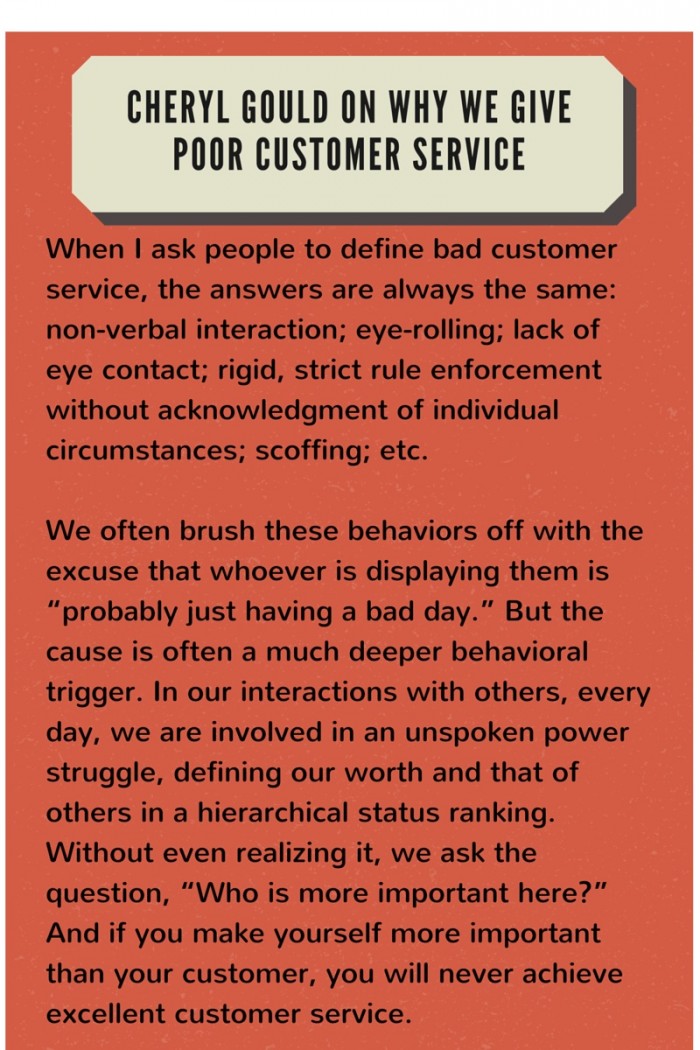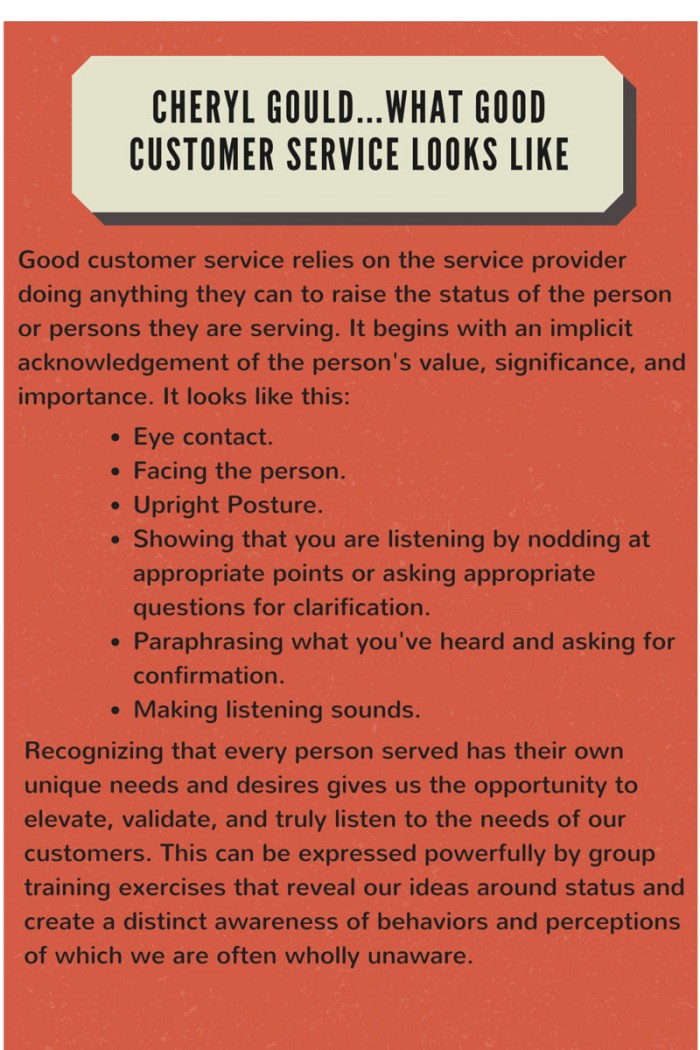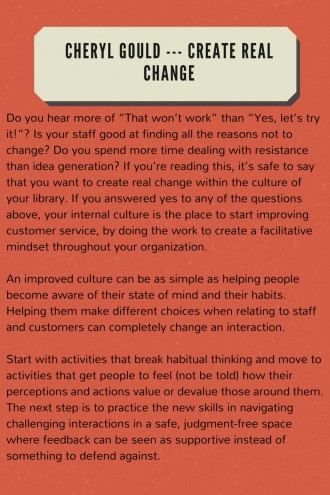A Facilitative Mindset: Five Steps to a Customer-Service Culture
Achieving excellent customer service requires a culture change in your library organization that is driven internally through the engagement and validation of staff. The complex subjects of behavior change and persuasion have been studied as far back as the ancient Greeks. Aristotle’s seven causes of human motivation conclude that insight alone does not produce behavior change. A person’s behavior will only change when that person’s beliefs change. Today, our systems are built around giving information; telling people what and how to act and behave; and thinking because we’ve given information that something different will happen. Yet, people cannot and will not change simply because they’re told to.
A Facilitative Mindset
There are four common mindsets around customer service in libraries. They range from an intense scarcity model to a positive abundance model that focuses on success.
1. It’s my job to protect the material we own.
2. It’s my job to enforce the rules.
3. How can I serve you [both internal and external customers]?
4. I care about people’s success. How can I help people be most successful?
Mindset number four is a facilitative mindset, where staff focus on helping people be successful in whatever ways they define success. A facilitative mindset is achieved when staff members feel valued and confident in their ability to serve. In a facilitative mindset people are thinking, “How can I make it easy for this person to meet their needs?” Good customer service is a behavior. We act based on what we believe, our prior experiences, and how we feel in the moment— which includes our status in relation to others. Therefore, internal culture must change. People can’t achieve an authentic facilitative mindset without trusting that they are valued and supported by their coworkers and the administration. They need to know, for instance, that they aren’t going to get in trouble for forgiving a fine or misunderstanding a rule and that their ideas will be heard and considered. Additionally, people need to become aware of the habits that aren’t working, and learn the skills and behaviors of good service.
A foundation of trust in the internal culture is needed before you can expect staff to feel safe enough to be creative with customer needs and confident enough that they can help. Supporting the professional and personal development of staff in any way possible—through trainings, conversations, conferences, and time to practice or learn—will help them feel valued. All of these things will contribute to staff members achieving a facilitative mindsest. This is a key underpinning to ensuring a vibrant customer service culture at your library.
A Customer Service Culture
Whether customer or coworker, we each have a deep human need to feel significant, important, and unique. How then can we help people feel like they matter? Here are five steps to building a customer service culture:
1. Decide to do things differently. Decision is the ultimate power when it comes to culture change. We know that simply telling people what or what not to do is ineffective and does not encourage creativity or risk-taking. All of us know things intellectually that we do not apply in our lives. Before change can happen, we must each decide to be respectful of others’ perspectives and have more open conversations.
2. Engage, don’t spend. Excellent customer service isn’t the result of buying more things. Too often little to no input is sought from the people delivering the service and most affected by changes. Staff members have ideas about improving service and their workplaces. They want to make a difference. People are most often resistant to change when they feel their opinions and ideas aren’t heard and don’t matter. There is a lot of talk in libraries about engaging the community; we need to start by engaging our staff.
3. Help people understand their sphere of influence. Give your customer-facing library staff a sense of control. Give them clarity over rules, responsibility, and decision making.
4. Practice empathy. A lot of improving customer service comes down to understanding the other person’s perspective. Have conversations with the intent to understand, not to be right. The value is in actively listening, without judgment. It’s just as important with coworkers as it is with customers.
5. Make the connection between internal and external service. Very often, the least valued people and the people we treat the worst in an organization (financially and otherwise), are the ones facing the customer. Many are the lowest in the internal hierarchy, so what is left but for them to lord the scraps of their power over the customer? Anything you can do to make staff feel significant will enhance service to the customer.Libraries are community-centric by definition; we need our values around serving the community to be mirrored internally. Help your staff connect their piece of the work to the bigger picture and model the behaviors internally that we want used with customers.
In my workshops over the past eighteen years, I’ve found that these elements are most helpful when asking people to open up to learning about themselves and thinking differently:
- Be playful. Get people to laugh. Find ways to play together to break down barriers.
- Don’t judge. Believe and model that it is safe to take risks, and okay to share worries, fears, confusion, frustration, and misunderstandings. Nobody is wrong; we’re all learning together.
- Practice and reflect. Help people become aware of their habits. Practice new behaviors in a safe environment so that staff feels confident using them under pressure with customers. Allow time for group discussion and individual reflection.
Impacting cultural change requires individual behavior change. Will Durant summarized Aristotle brilliantly in his 1924 book, The Story of Philosophy: The Lives and Opinions of the World’s Greatest Philosophers: “We are what we repeatedly do. Excellence, then, is not an act but a habit.” Excellent external service is the result of an internal culture that has a facilitative mindset and focuses on the success and significance of people. It needs to happen at every level of the organization. Decide now to make the change to positive customer service—internally and externally. It’s simple, though not necessarily easy. Start practicing a facilitative mindset with your coworkers and your customers, and watch your communication, interaction, and dynamics change to produce a culture of excellent service.
Tags: a facilitative mindset, achieving excellent customer service, cheryl gould, customer service, good customer service, library customer service training, poor customer service, public library customer service













